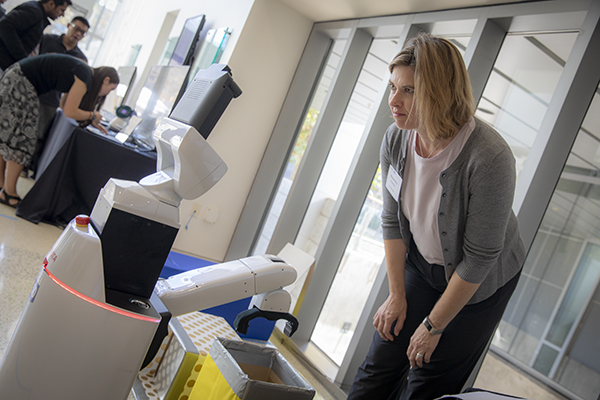2021 would expand on robotic innovations, thus addressing certain unique barriers.
Robotics is going to be one of the biggest improvements in how we live and work in the future. And that – is approaching very quickly. The next decade will be an incredibly interesting time to live through, with the potential to fully reshape science, healthcare, production, discovery and our everyday lives.
As the effects of the COVID-19 pandemic forced technology to greater heights, 2020 accelerated the use of robotics in all sectors, which enabled people to stay safe. 2021 would expand on these innovations, thus addressing certain unique barriers.
Here are a couple of the major challenges that robotics will face in 2021:
Mitigating Privacy and Protection Threats
There’s always the issue of privacy, morality, and protection with every technology. By reconditioning or altering it, the data used for preparing the robots may be misused, allowing the robot to breakdown. Likewise, the data obtained by the robot in its project lifecycle, such as recordings, photos, and location data, can also be breached into and used by fraudsters for illicit activities. Therefore, usage of robotic solutions and maintaining the protection of data still remains a serious issue.
In addition, there is no consistency about the ownership of the details the robot has. There is also no solid information on which party can use what portion of the information for what specific purpose. This brings up the question of whether the information will be used responsibly by the party that has possession of it.
Multi-purpose Uses
The expanding concept that keeps pushing robots to do more is multifunctionality. Robots that can do more will inevitably lead to greater productivity, whether it’s gathering more data, conducting more activities, or providing services to more needs. For example, instead of one, a robotic arm in a manufacturing process can organize 2 components of a commodity. It’s a step in the proper direction.
Robotics needs more human collaboration alongside more features, but also within the devices and processes themselves. They can reduce on lengthy processes if they can interact with each other.
Mapping and Navigating
A robot must maneuver safely through various type of environments when carrying out its given tasks in order to operate efficiently. It is important for the robot to create a model or map, determine its current location, and travel to the corresponding point. For robots, mapping, navigation, and routing are classic complications. As robots become completely autonomous, responsive to new situations, and extend their application range, it is important to find a good solution to these problems.
Expanding Valid Artificial Intelligence
Generally robots are designed using artificial intelligence technology and machine learning. Despite developments in these technologies, nonetheless, we still have not reached the point where the technologies can be fully trusted. Well first of all, it takes loads of data to train robots to perform their assigned duties. Besides that, as robots are typically trained in regulated environments, it is not assured that they will perform as expected. For robots to understand and take effective action, real-world scenarios may often become difficult. AI is presently no substitute for human logic, and robotic solutions are also not completely effective or entirely accurate.
Social Relationships
It is crucial that roboticists tackle the complexities of social relationships with a growing ability to bring robots into human settings such as hospitals. Signals from our voices, bodies and faces are fairly subtle and complicated, so it’s a major task to build a robot capable of detecting those signals and reacting appropriately. Moreover, basic moral & social values must be taken into consideration along with the disparities within communities and these relations must long-term be versatile and imperishable.

